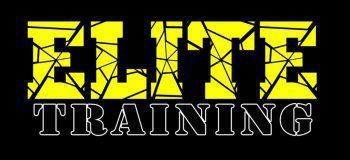By Tony
Shrink, comprised of shoplifting, employee or supplier fraud, and administrative errors, continues to plague many retailers in the U.S.
According to the most recent Global Retail Theft Barometer, the annual cost of shrink to U.S. shoppers, as absorbed or passed on from retailers, averaged $615 per household.
And while shoplifting is the biggest cause of retail shrink in 18 of the 24 countries surveyed, in the U.S., employee theft ranked first at 45 percent, with shoplifting next at 36 percent. The primary reasons for employee theft were weak pre-employment screening procedures, reduced associate supervision, an increasing part-time workforce and the easy sale of stolen merchandise.
Shoplifters and dishonest employees in the U.S. primarily targeted small and easy-to-conceal items such as liquor, mobile accessories, batteries, fashion accessories and razor blades, as well as high-value items with high resale value, such as tablets. When sorted by retail vertical, the most stolen items included footwear, batteries, mobile device accessories, wines and liquor and razor blades.
The most common loss prevention store solutions included CCTV/DVR (83 percent), alarm monitoring (78 percent) and security officers (63 percent). The most common merchandise protection solutions deployed to prevent retail theft included electronic article surveillance (68 percent), spider wraps/security keepers (41 percent) and advanced inventory control tactics (27 percent).
Ernie Deyle, one of the leading experts globally in the field of retail loss prevention, shed some additional light on the survey results.
The report says that “a challenging retail environment caused [retailers] to implement austerity measures resulting in a reduction of loss prevention investments.” What specific challenges are retailers experiencing?
As economic conditions erode, the first area to be affected is retail, which makes up a significant portion of the global economy. These challenges are first seen in the ability of consumers to spend. As price increases impact those wallets, consumers have less ability to spend. For example, the grocery sector has seen a rise in prices across the board; specifically beef, poultry, pork, grains and produce have all seen varying degrees of price increases over the last 15-24 months. When retail sales are suppressed, retailers then increase promotional markdowns. And as markdowns increase, other cost containment measures are implemented to “balance” the potential erosion of the P&L Statement. These cost containment measures include but are not limited to: expense controls that impact a broad spectrum of initiatives and are usually implemented as a “hair cut” reduction as a percentage of each department’s budget; store hours that are trimmed and affect the miss on sales; headcount reductions, typically at back-stage support functions; and store closings. Over the last 15-24 months, more than 9,500 stores have closed in the United States. Multiple retailers have filed for bankruptcy. The primary factor in determining a store closing is net profit. About 99.9 percent of the stores tagged to close are the worst shrink performing stores.
Why do most retail thefts occur in the winter months?
The winter season is associated with the holidays, where we see the highest volume of customer traffic, transactions processed and the most heavy inventory period. During this time, we see stresses associated with both internal theft and external theft.
Internal Theft: POS transactions are the leading cause of employee theft. As such, the impact of sales reducing activities is the most significant during this window. Some 43 to 47 percent of the annual impact is realized October through January. It typically has a residual impact past the holidays into January because of holiday returns and other factors.
External Theft: Shoplifting tactics increase with the ability to conceal stolen items in heavier clothing. Shoplifters can blend in with shoppers because of increased customer traffic, and they have more access to broader variety and higher volume of goods.
Employee theft seems to be the most prevalent reason for retail shrink in most retail theft reports. What’s stopping retailers from getting a handle on it and reducing it?
That’s a twofold answer:
The inability of retailers to leverage data into actionable information in a timely manner to make informed decisions to drive performance and maintain it once it is achieved.
The overall lack of knowledge on how to isolate and quantify the behavior patterns associated with employee theft.
The report says a strong investment in loss prevention tactics, tools and resources is needed. Specifically, what does that entail?
The spend must evolve. Tactics must adapt to the risk environment. As an industry, we must better leverage the counter measures, specifically data analytics to combat (isolate and eradicate) employee and vendor related theft/risk. We must better leverage the product protection safety net and/or web of counter measures that deter, control and defend against shoplifting and organized retail crime factors. Last, we must be fiscally savvy to balance our strategies to determine the value proposition for each shrink counter measure. This will allow us to optimize our attack strategy and defensive initiatives regardless of budget limitations.









